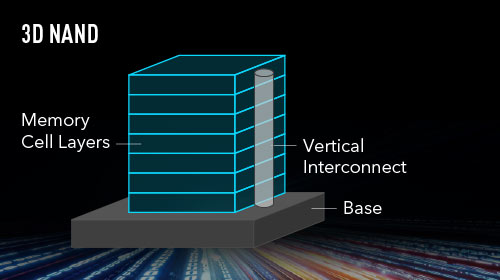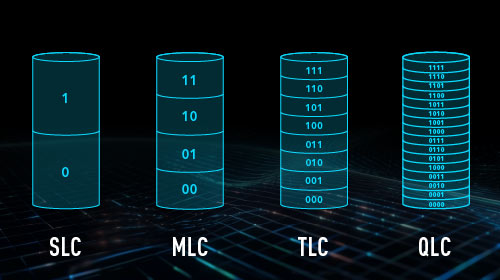Flash Storage Made Simple: From Fundamentals to Finding the Right Fit

Flash storage refers to any storage device that uses non-volatile flash memory to retain data. This includes SSDs (Solid State Drives), memory cards, embedded modules, and other solid-state media. Among them, SSDs are the most well-known and widely used in both consumer and industrial systems.
Operating Conditions
An industrial computer differs from its customer-class counterpart in many ways, but the most prominent differences are the capability to operate in 24/7/365 mode without interruptions or downtime, resistance to temperature spikes, vibrations, shock and high humidity. These demanding requirements to an industrial computer apply to all of its components, including storage devices.
Flash memory drives can be divided into two major classes:
- Standard temperature grade models
- Wide temperature grade modules

NAND Memory Cell Arrangement: Transition to 3D Structure
As manufacturers kept looking for ways to lower the cost of flash memory, they reached a point where shrinking the process below 10 nanometers no longer guaranteed cost reduction. To deal with these density and cost challenges, the industry moved toward 3D NAND, stacking memory cells vertically instead of trying to keep squeezing them into a flat layout.

NAND Memory Cell Types and Data Capacity
Currently, a memory cell can store 1, 2, 3 or 4 bits of information. Physically, all 4 types of NAND memory cells are composed of the same transistors, only the amount of charge stored by the cell differs. And all of the below technologies—SLC, MLC, TLC, and QLC—can be implemented in 2D (planar) or 3D (stacked) structures.
| Type | Bits per Cell | Charge Levels | P/E Cycles (Endurance) | Performance | Cost per Bit | Typical Use Cases |
| SLC | 1 | 2 (2¹) | Up to 60,000 | Best | Highest | Industrial, enterprise systems |
| MLC | 2 | 4 (2²) | ~3,000 - 10,000 | Moderate-High | High | General-purpose, light industrial |
| TLC | 3 | 8 (2³) | ~1,000 - 3,000 | Balanced | Medium | Consumer SSDs, everyday computing |
| QLC | 4 | 16 (2⁴) | ~100 - 1,000 | Slower | Low | Archival storage, read-intensive applications |
| iSLC | 1 (on TLC NAND) | 2 (emulated) | Up to 30,000 | Near SLC | Medium-Low | Industrial, embedded, cost-sensitive high-write systems |
| Ultra iSLC | 1 (on TLC NAND) | 2 (emulated) | Up to 100,000 | SLC-like | Lower than SLC | High-end industrial, edge AI, automation systems |
Form Factor and Interface
The 2.5-inch SATA form factor remains one of the most commonly used options across industrial and enterprise systems. Its widespread compatibility makes it a go-to choice for both traditional hard drives and SSDs. At the same time, M.2 SSDs have gained popularity, especially in systems with limited motherboard space. Their compact size and support for both SATA and PCIe interfaces make them highly versatile.
For scenarios where space is even more constrained, mSATA continues to be a relevant form factor, particularly in embedded or legacy designs.
While SATA still serves the needs of many users due to its stability and broad support, PCIe-based SSDs have become the preferred choice for those prioritizing speed. In most use cases, PCIe Gen4 already provides ample performance, but PCIe Gen5 is now being adopted in AI, edge computing, and data center environments, where ultra-high throughput is critical.